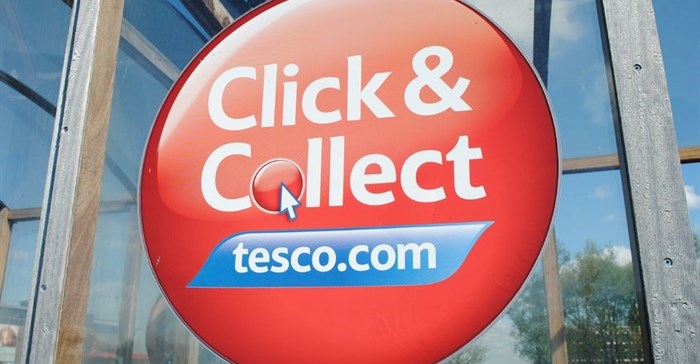The growing omni-channel fulfilment costs are forcing a significant number of retailers to increase minimum order values and home delivery costs, as few are running their store and online operations collectively. These findings are highlighted in CEO Viewpoint 2016: The Journey to Profitable Omni-Channel Commerce.
The third annual JDA/PwC global survey of more than 300 retail and consumer goods CEOs found that 75% of respondents admit to still running their store and online operations separately. This is taking a toll on retailers’ profitability and hinders their ability to create a seamless shopping experience for customers.
This year’s report highlights crucial differences between CEOs surveyed who eliminated silos between their store and online operations and those who had not. Companies without operational silos expressed greater confidence in revenue growth (59% vs. 48% average for all CEOs) and profit growth (63% vs. 43%) than their peers did. CEOs that have removed silos are also achieving significant competitive advantage though lower costs and increased investments in customer-centric services.
“Fulfilling omni-channel demand profitably remains a huge challenge for retailers. As online continues its double digit rate of growth and takes a greater share of a retailer’s overall sales, the resulting margin erosion from the additional costs associated with fulfilling customer orders, could have an adverse effect on profitability,” said Lee Gill, group VP, global retail strategy, JDA.
“As retailers have embraced offering consumers less costly alternatives to home deliveries, free Click & Collect has grown in popularity. To ask consumers now to pay for Click & Collect certainly has its risks. What is clear is that profitability has to be addressed as a matter of priority. This will require both an investment in the supply chain and technology, as retailers seek a low cost fulfilment model that also delivers exemplary customer service. Amazon has led the way and this it is set to be the key battleground for retailers in the next five years.”
Omni-channel fulfilment costs threatening retailers’ profitability
More than two-thirds (68%) of CEOs say their costs for omni-channel fulfilment are increasing.
- 69% of CEOs said that shipping directly to consumers from a distribution centre was their highest omni-channel fulfilment cost
- This was followed by processing returns (63%) and shipping to store for pick-up (59%)
This data strongly suggests that removing silos from omni-channel operations can give companies a competitive cost advantage. To deal with the high costs of omni-channel fulfilment CEOs are planning to offset increased costs in the following ways:
- Raising the minimum order value for free home delivery (39%)
- Raising the minimum order value for free Click & Collect services (31%)
- Increasing the cost for home delivery (29%)
However, putting cost increases back on the consumer may dissuade consumers from shopping with them. Last year’s JDA Customer Pulse report revealed that cost remains the most important factor for people when ordering something online.
Click & Collect options increasing in emerging markets
This survey also reveals that retailers who wish to compete in global markets (e.g. China and Mexico) realise they must offer a wider range of fulfilment offerings to their customers, to compete with companies in those markets already offering such services. Over the next 12 months:
- 60% of retailers in emerging markets are offering or plan to offer in-store Click & Collect services
- 46% of retailers in emerging markets are offering or plan to offer Click & Collect services in commuter travel hubs
- 42% of retailers in emerging markets are offering or plan to offer Click & Collect services via third-party retailers
Of note, more mature omni-channel companies are more likely to offer in-store Click & Collect (56% vs. 47%) than their peers with silos are but are less likely to offer any of the other Click & Collect options, such as picking up purchases at lockers or commuter travel hubs. These companies appear more focused on the speed of delivery, favouring same-day over next day deliveries and are more likely to offer specific time slots for customer deliveries. In mature markets, speed to delivery can be a loyalty-building competitive advantage.
Order fulfilment options
Ultimately, the data from the survey reveals that CEOs are investing in the one area that is costing them the most, and potentially impacting their profitability: order fulfilment options. CEOs surveyed are spending 26% of their investment capital on omni-channel readiness in 2016, with some of these investments centring around extending omni-channel fulfilment options for customers (51%), providing a seamless customer shopping experience (49%) and most importantly, understanding social media for business use (49%). Understanding and analysing customer data is critical to mastering omni-channel in 2016 and beyond.
“Understanding customer sentiment and shopping preferences by way of social media and big data analytics is key to ensuring customer satisfaction and increasing retailers’ profitability in the years ahead,” continued Gill. “It is important to note that CEOs’ investment intentions are higher now than they are over the next three years, especially around the critical omni-channel functions of extending the range of customer fulfilment options and providing seamless customer shopping experiences. Retailers need to get it right now in order to stay competitive and expand into emerging markets, particularly as big box retailers and discount retailers continue to proliferate and threaten smaller retailers globally.”
































